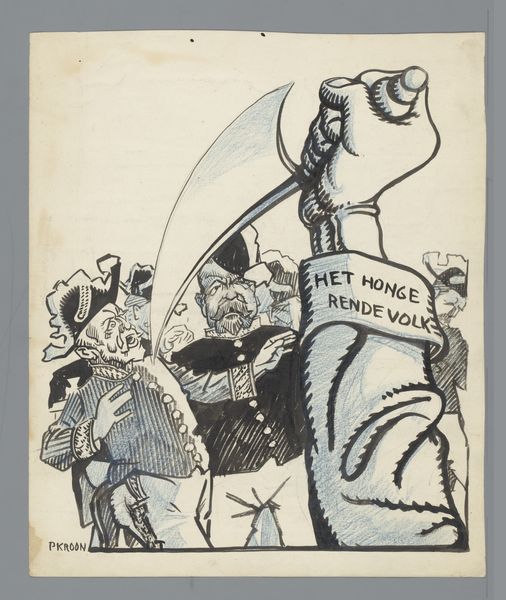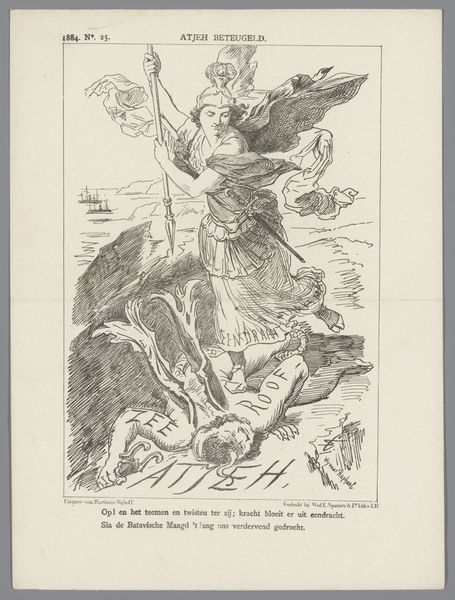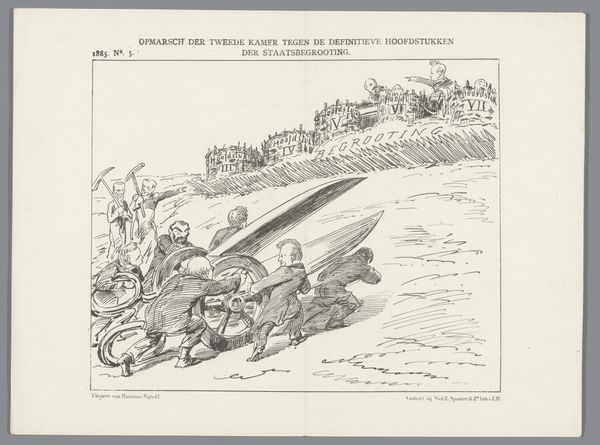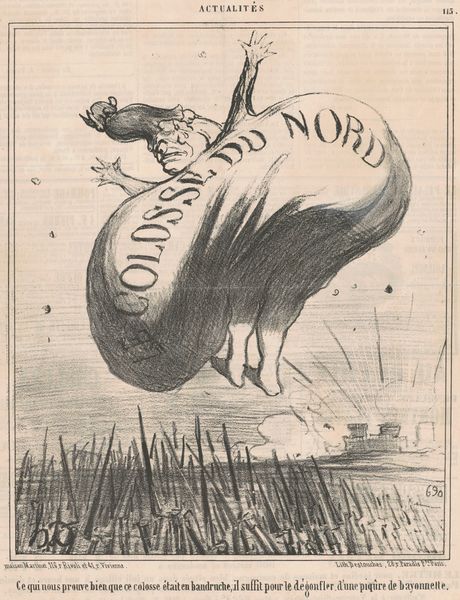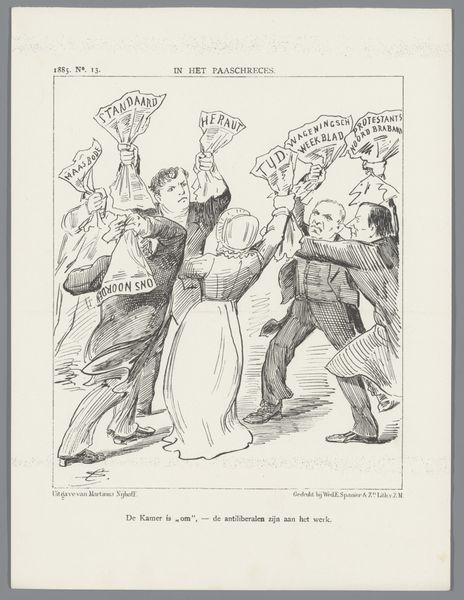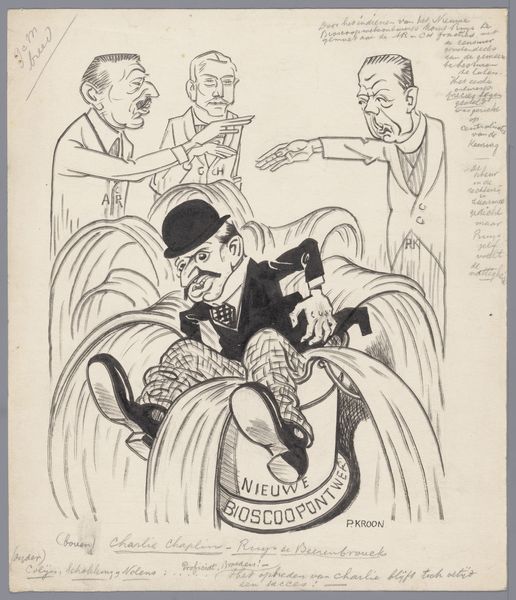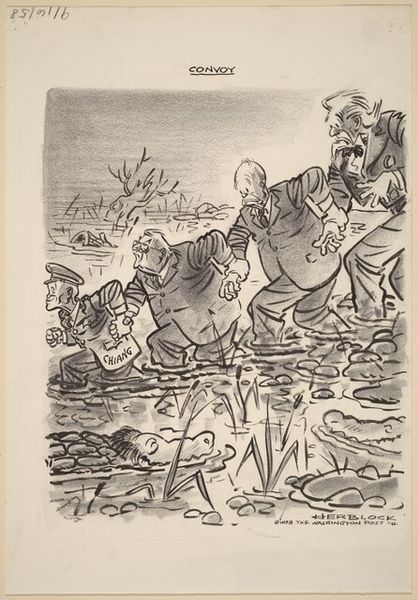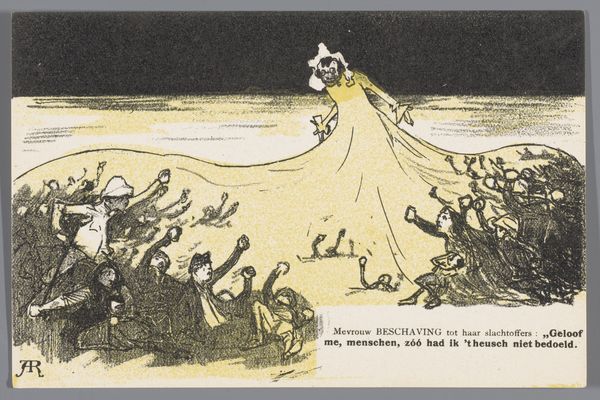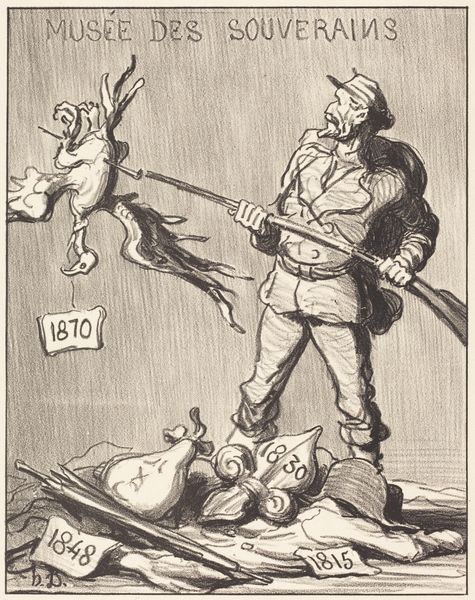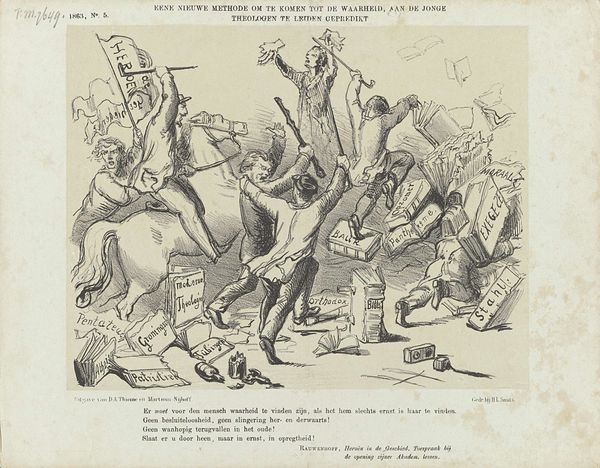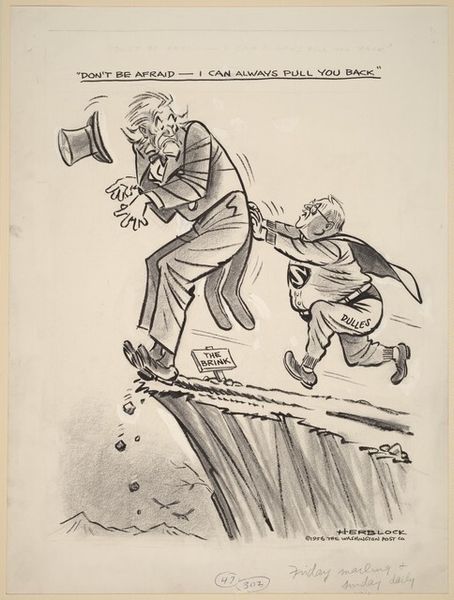
drawing, graphic-art, ink, pen
#
portrait
#
drawing
#
graphic-art
#
pen illustration
#
caricature
#
ink
#
group-portraits
#
pen
Dimensions: height 272 mm, width 395 mm
Copyright: Rijks Museum: Open Domain
Editor: This pen and ink drawing, "Cartoon van de bemanning van de 'Pelikaan'", from before 1949, is really striking. There’s something playful and defiant about it. I'm curious about the statement at the top, and the political background. How do you interpret this work, given its historical context? Curator: The drawing presents itself as a caricature, and it's crucial to understand the role of caricature as a tool for social and political commentary. Who are the figures riding the pelican, and what could the pelican itself symbolize in the Dutch context? The inscription, roughly translating to "See what courage achieves," speaks to the spirit of the Dutch people during times of conflict and the colonial history that shaped their perception. The print's anonymous origin piques interest further. What does it say that no artist is signing their name to such an obviously pointed piece? Editor: I see your point. So, the pelican might represent colonial reach or even the Dutch East India Company? And maybe the absence of an artist's name protects them. Curator: Exactly. Consider this cartoon a visual text reflecting the social and political landscape of the pre or post-war period. Do you think the cartoon's potential impact lies in mocking those figures or bolstering the crew as heroes? How does its messaging challenge the status quo or maybe just perpetuate dominant narratives? Editor: It seems like it treads a fine line. Perhaps its purpose shifts depending on who's viewing it. A colonizer versus the colonized would have opposing readings. Curator: Precisely! Considering it is in the Rijksmuseum's collection suggests a critical reflection on the national narrative and challenges us to deconstruct the complexities of Dutch history and power dynamics. Understanding such narratives in old graphic art becomes increasingly important. Editor: That makes me see the piece in a completely new way. Thanks for broadening my understanding. Curator: Absolutely! Questioning and researching the art through these intersectional lens allows art to engage within modern activism.
Comments
No comments
Be the first to comment and join the conversation on the ultimate creative platform.
